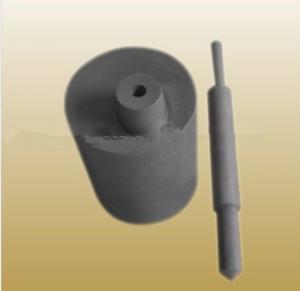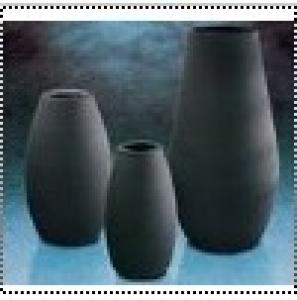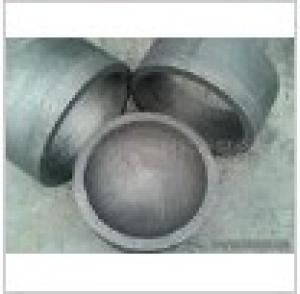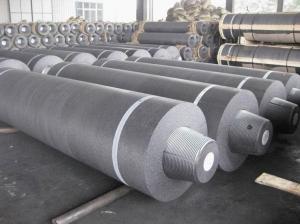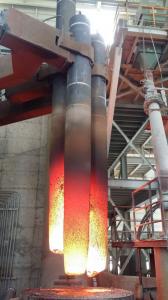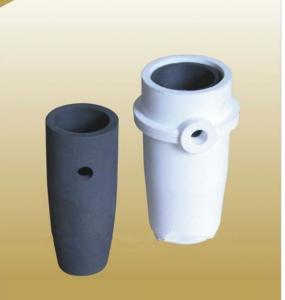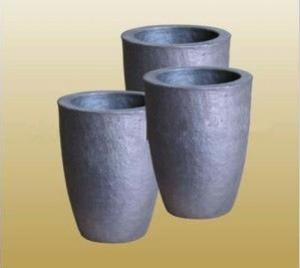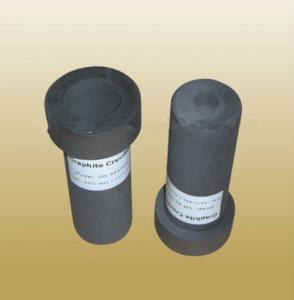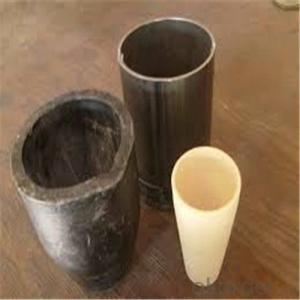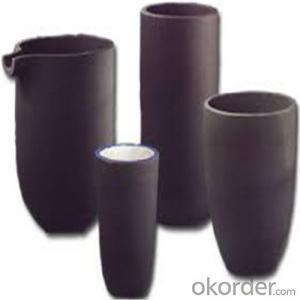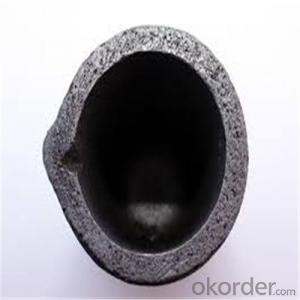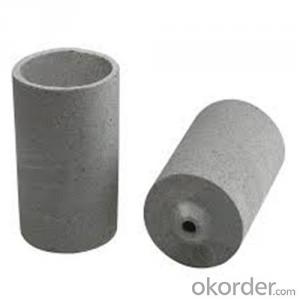100 oz Kerr Graphite Crucible
- Loading Port:
- China Main Port
- Payment Terms:
- TT or LC
- Min Order Qty:
- 50 Pieces pc
- Supply Capability:
- 10000 Pieces per Month pc/month
OKorder Service Pledge
Quality Product, Order Online Tracking, Timely Delivery
OKorder Financial Service
Credit Rating, Credit Services, Credit Purchasing
You Might Also Like
Detailed Product Description
Graphite melting crucible
Metal type : gold , silver and brass & copper
3 Kilos melting capacity
Kerr electro melt oven
Graphite Crucible 3 Kilos, Fits Kerr Electric Auto Furnace
Item Description
-
Graphite Crucible 3 Kilos, Fits Electric Auto Furnace.
-
This is a new Graphite Crucible designed for the Hand held Melting Furnace.
-
Can be used for all metal types, like gold ,silver,copper etc.
-
This model has the groove in the top for the wire type crucible tongs.
-
Measurements :
-
Top outside diameter (mm) : 102mm
-
Top inside diameter (mm) : 85 mm
-
Height with the top (mm) : 125mm
- Q:Is pig iron smelted in a graphite crucible?
- In charge of limestone (CaO) from slagging, fluxing action, it can reduce the melting temperature of iron ore, iron and other elements also formed slag react, covering on the surface of the molten iron, molten iron and insulation protection.After the pig iron smelting, made pig iron ingot, sold to the market. According to the application of ingot has two kinds: cast iron and steel and iron.Casting pig iron: the fracture surface is dark grey, and the mass fraction of silicon is high. It is mainly used in the production of cast iron parts.Steel pig iron: the fracture surface is bright white, and the mass fraction of silicon is low. It is mainly used in the steelmaking process.
- Q:How does a graphite crucible handle corrosive substances?
- A graphite crucible is highly resistant to corrosion when handling corrosive substances. Graphite is known for its exceptional chemical stability, making it an ideal material for handling such substances. Its unique structure and bonding properties make it resistant to attack from acids, alkalis, and other corrosive agents. Graphite has a high melting point, low coefficient of thermal expansion, and excellent thermal conductivity, which allows it to withstand extreme temperatures and rapid temperature changes without cracking or deforming. This makes it suitable for use in various industries, including metallurgy, foundries, and laboratories, where corrosive substances are frequently encountered. Furthermore, graphite has a non-wetting property, meaning it does not react with molten metals or other corrosive materials. This non-reactivity prevents any contamination or chemical reaction between the crucible and the corrosive substances it contains. As a result, the graphite crucible maintains its integrity and does not compromise the quality or purity of the substances it is handling. In summary, a graphite crucible is an excellent choice for handling corrosive substances due to its exceptional chemical stability, resistance to corrosion, high melting point, thermal conductivity, and non-wetting property. Its ability to withstand harsh conditions and maintain its structural integrity makes it a reliable and durable option in various applications where corrosive substances are involved.
- Q:How do you prevent graphite crucibles from overheating during use?
- One way to prevent graphite crucibles from overheating during use is to ensure proper insulation and cooling. This can be achieved by using a furnace or kiln with well-regulated temperature controls and adequate ventilation. Additionally, it is important to monitor the temperature closely and avoid sudden temperature changes, as this can cause thermal shock and potential overheating.
- Q:Can graphite crucibles be used for melting iron?
- No, graphite crucibles cannot be used for melting iron as iron has a much higher melting point than graphite can withstand.
- Q:What are the considerations for selecting a crucible support for graphite crucibles?
- When choosing a support for graphite crucibles, it is important to take several key factors into account. Firstly, the support must be compatible with graphite crucibles. Graphite has unique characteristics, such as a high melting point and thermal conductivity, which necessitate a support that can withstand these conditions without deforming or reacting with the crucible material. Common materials used for this purpose include silicon carbide or clay graphite, as they possess high temperature resistance and are compatible with graphite. Secondly, the size and shape of the crucible support should be considered. The support should securely hold the graphite crucible in place, preventing any movement or tipping during heating or pouring. It should also provide sufficient stability to bear the weight of the crucible and the material being melted or processed. The design and construction of the crucible support are also important factors to consider. It should have a sturdy and robust structure to ensure long-term durability and reliability. Additionally, the support should be easy to handle and maintain, facilitating convenient handling and cleaning. Moreover, the thermal properties of the crucible support are essential. The support should have good thermal conductivity to evenly distribute heat to the crucible, ensuring uniform heating and preventing any hotspots or thermal stress. It should also have low thermal expansion to minimize the risk of cracking or damaging the crucible during heating and cooling cycles. Finally, cost and availability play significant roles in the decision-making process. Crucible supports can vary in cost depending on the material, design, and size. Evaluating the budget and availability of crucible supports is crucial to ensure they meet the requirements and constraints of the specific application. In conclusion, selecting a crucible support for graphite crucibles requires thorough consideration of factors such as compatibility, size and shape, design and construction, thermal properties, and cost. By taking these factors into account, one can choose a suitable crucible support that guarantees optimal performance and longevity for graphite crucibles.
- Q:Is it possible to repair a cracked graphite crucible?
- No, it is not possible to repair a cracked graphite crucible.
- Q:Can graphite crucibles be used for plasma arc melting?
- Yes, graphite crucibles can be used for plasma arc melting. Graphite crucibles are known for their high thermal conductivity and resistance to high temperatures, which makes them suitable for use in various high-temperature applications. Plasma arc melting, which involves the use of an electric arc to generate and sustain a plasma state, requires a crucible that can withstand the intense heat generated during the process. Graphite crucibles are able to withstand these high temperatures and provide a stable and durable container for the molten material produced during plasma arc melting. Additionally, graphite crucibles offer good chemical resistance and can handle corrosive materials that may be present during plasma arc melting. Overall, graphite crucibles are a commonly used and effective choice for plasma arc melting applications.
- Q:Can graphite crucibles be used for semiconductor doping?
- No, graphite crucibles cannot be used for semiconductor doping because graphite can contaminate the semiconductor material, affecting its electronic properties.
- Q:Can a graphite crucible be used for ceramic glazing?
- No, a graphite crucible is not suitable for ceramic glazing. Ceramic glazes require high firing temperatures that can cause the graphite crucible to degrade or react with the glaze materials, leading to contamination and poor results. It is recommended to use a crucible made from materials like alumina or porcelain for ceramic glazing.
- Q:How do you determine the appropriate crucible lid for a graphite crucible?
- To determine the appropriate crucible lid for a graphite crucible, there are a few factors to consider: 1. Size and shape of the crucible: The lid should fit snugly onto the crucible to create a tight seal. Measure the diameter and height of the crucible and select a lid that matches these dimensions. 2. Material compatibility: Ensure that the lid material is compatible with the high temperatures and chemicals used in the crucible. Graphite crucibles are often used for high-temperature applications, so the lid should also be able to withstand extreme heat without warping or cracking. 3. Ventilation needs: Some processes require the release of gases or vapors during heating. In such cases, select a lid that has a vent or hole to allow for proper ventilation. This will prevent pressure buildup and potential damage to the crucible. 4. Application-specific requirements: Consider any specific requirements of your application. For example, if you need to observe the contents of the crucible during heating, opt for a lid with a transparent window or a removable cover. 5. Manufacturer recommendations: Check the recommendations provided by the crucible manufacturer. They may suggest specific lids that are designed to work well with their crucibles. Taking these factors into account will help you determine the appropriate crucible lid for your graphite crucible, ensuring optimal performance and safety during your heating processes.
We are always keeping enlarging production scale, perfecting management system, and improving office facilities to expand our markets both at home and abroad.We sincerely welcome clients at home and abroad to come for negotiations.
1. Manufacturer Overview |
|
|---|---|
| Location | Guangdong,China (Mainland) |
| Year Established | 2010 |
| Annual Output Value | |
| Main Markets | North America South America Eastern Europe Southeast Asia Africa Oceania Mid East Eastern Asia Western Europe |
| Company Certifications | |
2. Manufacturer Certificates |
|
|---|---|
| a) Certification Name | |
| Range | |
| Reference | |
| Validity Period | |
3. Manufacturer Capability |
|
|---|---|
| a)Trade Capacity | |
| Nearest Port | |
| Export Percentage | 61% - 70% |
| No.of Employees in Trade Department | |
| Language Spoken: | |
| b)Factory Information | |
| Factory Size: | 1,000-3,000 square meters |
| No. of Production Lines | Above 10 |
| Contract Manufacturing | OEM Service Offered |
| Product Price Range | |
Send your message to us
100 oz Kerr Graphite Crucible
- Loading Port:
- China Main Port
- Payment Terms:
- TT or LC
- Min Order Qty:
- 50 Pieces pc
- Supply Capability:
- 10000 Pieces per Month pc/month
OKorder Service Pledge
Quality Product, Order Online Tracking, Timely Delivery
OKorder Financial Service
Credit Rating, Credit Services, Credit Purchasing
Similar products
New products
Hot products
Hot Searches
Related keywords


